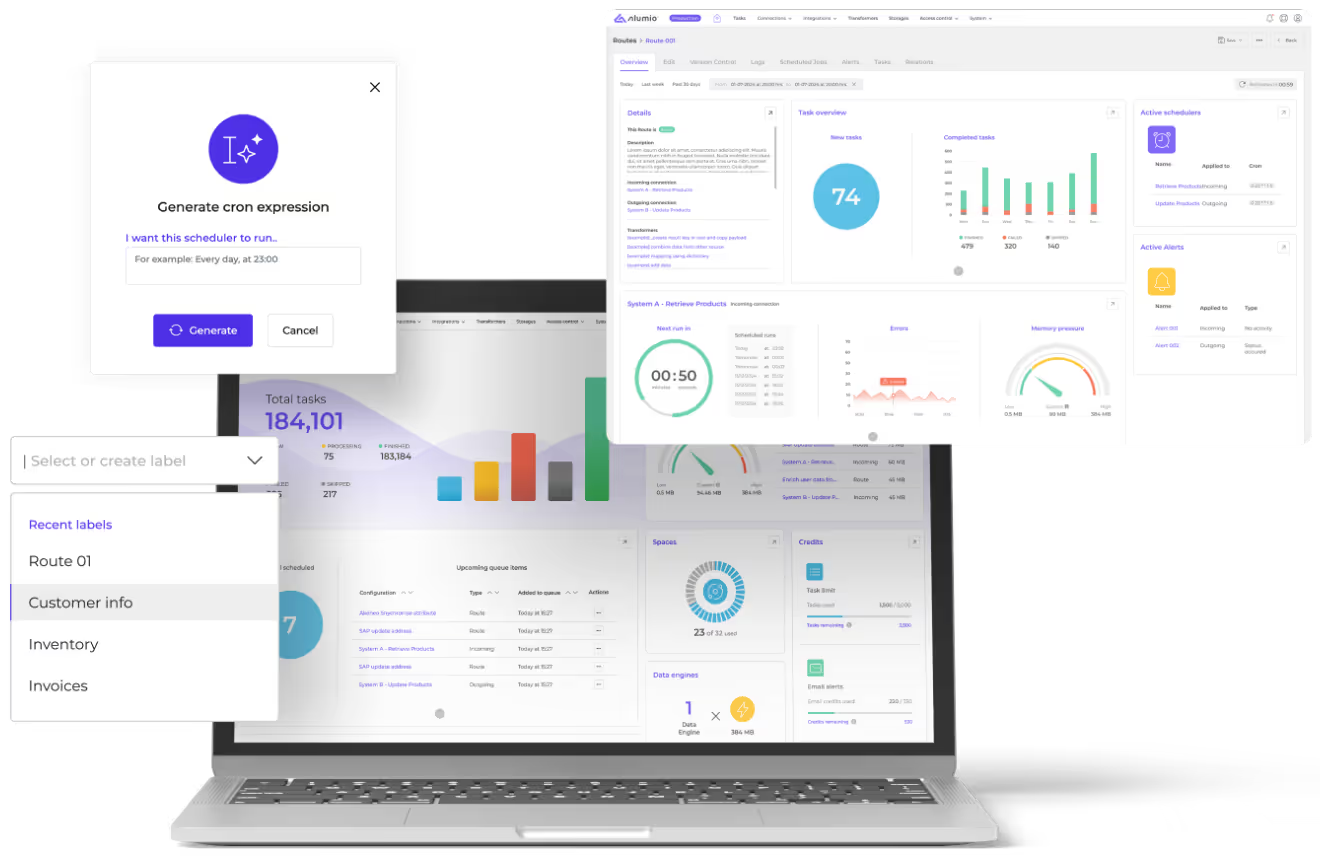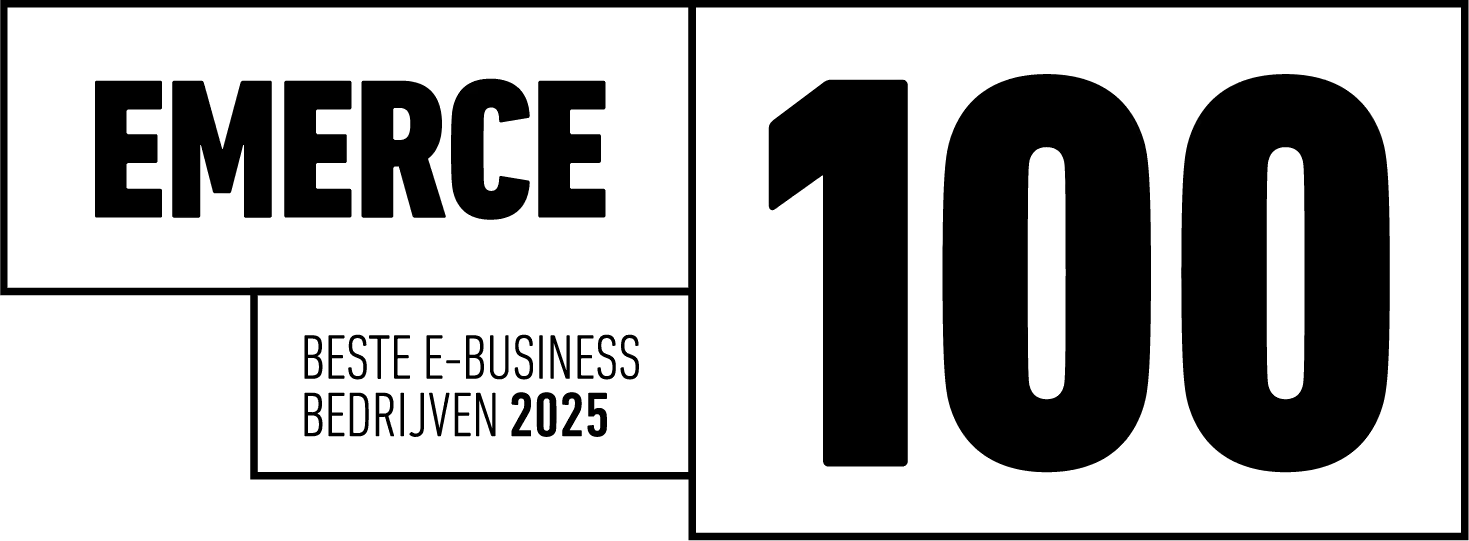Comparing the 10 best PIM platforms in 2025
As industries like retail, manufacturing, and distribution continue to digitize and expand into multichannel or omnichannel environments, the volume and complexity of product data grows exponentially. What once lived in spreadsheets or ERP systems now needs to power e-commerce platforms, marketplaces, catalogs, and marketing tools—all with speed, accuracy, and consistency. And that’s precisely what PIM solutions deliver.
In 2025, choosing the best PIM solution for your business isn’t just about managing data, it’s about finding the right fit for your industry, product complexity, company size, and digital maturity. With so many top product information management tools now offering specialized capabilities, from open-source flexibility to enterprise-grade governance, understanding which PIM aligns with your business goals and tech ecosystem is key to scaling successfully. With that, let’s jump into our top PIM software comparison for this year:
1. Akeneo
One of the most widely adopted PIM solutions, Akeneo is a product experience management (PXM) platform that helps businesses deliver enriched, consistent product data across every sales and marketing channel. It offers a free open-source Community Edition that’s ideal for developers and a powerful Enterprise Edition for global brands. In 2025, Akeneo introduces AI-powered content localization, dynamic attribute rules for compliance, and an enhanced Asset Manager for automated media formatting. With support for over 500 activation channels, it remains a go-to choice for fast-growing, omnichannel businesses.
Best for: Mid-market businesses and enterprises that need an open-source PIM platform with strong community support and flexibility will find Akeneo to be the right fit.
Pros:
- Easy for marketing teams: User-friendly interface that accelerates onboarding.
- Strong developer ecosystem: Large community and robust extension marketplace.
- Flexible data modeling: Supports complex product hierarchies with Family and Attribute models.
- Built for scale: Native support for multiple tenants, locales, and channels.
Cons:
- High Cost at Scale: Cloud Edition pricing rises with advanced governance needs or large-scale catalog projects.
- Feature Tiering: Advanced features, such as AI-driven attribute suggestion, are gated behind higher tiers.
Pricing: While Akeneo’s Community Edition (open-source) is free to download and use. Paid plans start at approximately €25,000/year (incl. basic support, up to 2M SKUs).
2. Pimcore
A powerful contender in the open-source space, Pimcore delivers a unified platform that combines PIM, Master Data Management (MDM), Digital Asset Management (DAM), and headless CMS capabilities. Designed for businesses that need more than just product data handling, Pimcore serves as a digital experience hub, ideal for companies managing complex, multi-domain data. In 2025, Pimcore introduces AI-driven features with Pimcore Copilot, which provides context-aware automation and generative AI for content creation. Its open architecture lets you connect any AI/ML model (including OpenAI, Google, Hugging Face) or train custom models in-platform to empower smarter data enrichment.
Best for: Ideal for mid-market to enterprise brands that require an all-in-one, open-source suite for PIM, MDM, DAM, and CMS with full customization flexibility.
Pros:
- Single source of truth: Delivers centralized management for both product and non-product data (e.g., customers, suppliers, locations).
- Highly customizable: Flexible data modeling, workflow automation, and event-driven APIs allow complete platform tailoring.
- API-first architecture: Easily integrates with ERP, CRM, e-commerce platforms, DAMs, and other third-party systems.
- AI-powered data validation: Built-in AI suggests attribute improvements and flags missing or inconsistent product data.
- Open-source advantage: Community Edition provides enterprise-grade functionality with zero licensing costs.
Cons:
- Developer-heavy setup: Requiring PHP and Symfony knowledge, complex builds often need experienced developers.
- Limited analytics and reporting tools: Native reporting and export tools are basic; advanced reporting requires custom-builds or third-party tools.
- Minimal out-of-the-box configuration: Unlocking advanced PIM features often demands custom development.
Pricing: Pimcore provides a free (self-hosted) community edition and an enterprise edition where custom pricing depends on selected modules (DAM, PIM, MDM) and support levels.
3. KatanaPIM
KatanaPIM is one of the fastest-growing PIM solutions, especially in the B2B space. It delivers an intuitive interface that lets wholesalers, distributors, and brands spin up rich product catalogs in days, pushing data to multiple sales channels without custom development. Built for real-time collaboration, its cloud-native design ensures marketing, sales, and product teams can collaborate seamlessly. Its straightforward interface, rapid onboarding, and real-time collaboration tools make it especially attractive for businesses prioritizing agility and multichannel e-commerce growth. KatanaPIM’s strong Dutch support team adds a regional edge, though its global reach and advanced features lag behind enterprise-grade competitors.
Best for: B2B wholesalers, distributors, and mid-market brands focused on fast time-to-market and straightforward PIM for e-commerce use cases.
Pros:
- Smooth onboarding: Guided setup with dedicated specialists and regular updates ensure smooth early adoption.
- Real-time collaboration: Custom roles and permissions enable real-time, simultaneous editing across marketing, sales, and product teams.
- Multichannel-ready: Built-in connectors for Shopify, BigCommerce, and Amazon.
- SMB-friendly pricing: Tailored plans offer great value for SMBs and mid-market brands without compromising on core features.
Cons:
- Limited ecosystem: Fewer plugins and integrations than enterprise-grade platforms.
- Basic workflow tools: Less advanced automation and governance controls.
- Localization gaps: Limited support and few prebuilt translations for multilingual/regional content.
- Scalability limits: Performance may dip for catalogs exceeding 100,000 SKUs or highly complex data models
Pricing: Provides cost-effective plans starting from €350/month with basic catalog management for up to 5 users. Pricing scales based on features and number of users.
4. Salsify
A leader in product experience management (PXM), Salsify empowers brands to optimize their digital shelf through one-click syndication and data-driven insights. It empowers businesses to syndicate product data to a vast network of online marketplaces and retailers. Leveraging AI-driven recommendations, it helps enhance product content and drive conversion. In 2025, Salsify includes AI-powered content scoring, expanded retailer connectors, and advanced analytics dashboards to measure conversion, elasticity, and channel performance. As another cloud-based PIM in this PIM software comparison, Salsify offers enterprise-grade reliability, frequent feature updates, and a focus on omnichannel consistency.
Best for: For mid-market businesses that prioritize digital shelf optimization, extensive marketplace syndication, and data-driven product experience insights.
Pros:
- Retail syndication at scale: One-click syndication to major online marketplaces and retailers like Amazon and Walmart, reducing manual feed management.
- Built-in analytics: Real-time visibility into digital shelf performance, conversion metrics, and pricing trends.
- Enterprise-friendly: Enterprise-level SLAs, auto-updates, and consistent rollouts ensure platform stability.
Cons:
- Higher cost of entry: Pricing is tailored to enterprise customers and is expensive for SMBs.
- Complex setup: Complex implementations, especially for syndicating to dozens of new retailer feeds, frequently demand Salsify’s professional services.
- Restricted flexibility: Custom data models and workflows are limited by Salsify’s data model and predefined workflow framework.
Pricing: Custom quotes for its enterprise suite may typically start around $45,000–$60,000/year. Additional costs apply for modules such as DAM, AI enrichment, and extended support.
5. inriver
Tailored for manufacturers and B2B enterprises, inriver is a relationship-centric PIM platform built to manage complex product hierarchies, bundles, and variant configurations. Its channel-specific templates enable brands to publish customized catalogs for different distributors or reseller networks, while a robust API toolkit ensures seamless integration with ERPs, CRMs, and e-commerce platforms. In 2025, inriver enhances its data model with AI-powered relationship suggestions and streamlined syndication connectors—making it easier to automate catalog updates across global dealer networks.
Best for:
Manufacturers and B2B companies with large, complex product hierarchies and extensive dealer or reseller networks.
Pros:
- Powerful syndication: Automates sending product data to distributors, retailers, and marketplaces for consistent, up-to-date catalogs.
- Relationship-centric data modeling: inriver’s elastic model is designed to configure products with interchangeable parts, bundles, or multi-level assemblies, supporting industries like automotive, electronics, and industrial equipment.
- Channel-specific catalog templates: The platform enables teams to create customized catalogs for different distributors, resellers, or marketplaces.
- Enterprise-scale performance: Scales smoothly to hundreds of thousands (or millions) of SKUs, trusted by large-scale manufacturers.
Cons:
- Lengthy implementation: Custom configurations can take a long time to implement and demand dedicated project management and resources.
- Dated user experience: Some workflows require multiple clicks to update nested relationships; the interface can feel less intuitive for new users.
Pricing: While licensing and total cost of ownership are not publicly listed, it is best suited for organizations with >$100M in revenue that can absorb enterprise costs.
6. Contentserv
A comprehensive product data management software, Contentserv provides PIM, DAM, and marketing resource management (MRM) with a strong focus on governance and localization. Its scalable architecture supports complex hierarchies, role-based workflows, and multi-region content delivery. This makes it ideal for global enterprises that need to manage hundreds of thousands of SKUs in multiple languages. In 2025, Contentserv enhances its platform with automated localization workflows, expanded AI-driven data validation, and improved workflow templates for cross-functional collaboration.
Best for:
Large enterprises needing deep governance, advanced localization capabilities, and granular data control across global markets.
Pros:
- Comprehensive data governance: Robust permission controls, role-based workflows, version history, and audit trails ensure full control over every data change.
- Scalable architecture: Handles hundreds of thousands of SKUs and high-volume asset libraries without performance degradation.
- Advanced localization: Built-in translation workflows and language management simplify multi-region product launches.
Cons:
- Steep learning curve: Its extensive feature set requires dedicated onboarding support, training, and change management.
- Complex customizations: Custom configuration and workflow templates often demand multi-month rollouts and certified partner assistance, limiting self-service for non-technical teams.
Pricing: Custom enterprise-level pricing, depending on modules (PIM, DAM, MRM) and support levels. Onboarding, localization setup, and custom workflow development may cost additional fees.
7. Plytix
Built for SMBs and lean teams, Plytix is a cloud-native PIM that emphasizes speed, simplicity, and collaboration. Its intuitive interface lets small e-commerce and retail brands set up catalogs in hours rather than days, while built-in collaboration tools (comments, tasks, and audit trails) keep everyone aligned. Plytix also offers an embedded media library for basic DAM capabilities, making it a one-stop shop for early-stage PIM needs. Although it lacks many enterprise-grade features, its clear pricing makes it a go-to for budget-conscious, growth-oriented teams.
Best for:
SMBs and startups seeking an affordable, easy-to-use PIM with collaborative features and minimal setup overhead.
Pros:
- User-friendly: Intuitive UI and guided setup let non-technical teams get started within hours.
- Collaborative workflows: Built-in comments, tasks, and version history keep product, marketing, and sales teams in sync.
- Basic DAM included: Embedded media library allows storage and simple editing of images and videos without a separate tool.
Cons:
- Limited enterprise features: Lacks advanced workflow automation, AI-driven enrichment, and complex data modeling.
- Basic analytics: Native reporting is minimal, and advanced insights require manual exports or third-party BI tools.
Pricing: Free tier for up to 500 SKUs and 3 users. Paid plans start at $450/month, with the professional plan at $950/month extending up to 50,000 SKUs, 10 users, workflows, API access.
8. Sales Layer
Sales Layer is a fast-to-implement PIM designed for brands that prioritize rapid time-to-market and straightforward multichannel syndication. For businesses looking for a PIM for e-commerce, its no-code data model wizard and drag-and-drop attribute mapping let teams publish to Shopify, Magento, and Google Shopping in days. Sales Layer also provides built-in data quality checks and basic DAM features, but its primary strength is in its simplicity, not extreme customization. While excellent for mid-market catalogs and tight deadlines, Sales Layer isn’t for organizations requiring bespoke data models or deep workflow governance.
Best for: SMEs needing a PIM that can be deployed rapidly and swiftly publish clean product feeds to multiple e-commerce channels.
Pros:
- Quick implementation: Guided data import wizard and prebuilt templates allow setup and first syndication in days.
- Data quality validations: Built-in checks for missing attributes, duplicate SKUs, and invalid formatting boost catalog accuracy.
- Basic DAM support: Simple asset management for images and videos ensures all media is linked to the correct products.
Cons:
- Rigid data model: Limited flexibility for complex hierarchies or nonstandard attribute types; not ideal for intricate B2B catalogs.
- Minimal workflow automation: No advanced approval chains or branching logic, wherein teams requiring sophisticated governance may need external tools.
- No true multi-tenancy: Separate instances needed for multiple brands or regional catalogs, increasing administration overhead.
Pricing: Standard plans start from $9,000/year (up to 25,000 SKUs, 3 users, basic support).
9. Catsy
Catsy is a PIM built specifically for industrial distributors and manufacturers, offering tightly integrated DAM (Digital Asset Management) and GDSN (Global Data Synchronization Network) compliance. Its industry-focused templates accommodate complex attributes, like technical specifications, certifications, and 3D files, while GDSN connectivity ensures seamless data syndication to large retailer and distributor networks. Catsy’s strength lies in B2B-centric features (bulk data onboarding, matrix pricing, and UOM conversions), making it a preferred choice for sectors such as electronics, industrial equipment, and CPG.
Best for:
Enterprise-level industrial distributors and manufacturers that require built-in DAM, GDSN syndication, and B2B-centric data models.
Pros:
- Built-in DAM: Centralized storage and version control for images, CAD files, spec sheets, and videos.
- GDSN compliance: Direct connectivity to GS1 networks ensures automated, standardized data syndication to global retailers and distributors.
- Industry-specific templates: Pre-configured attribute sets for industrial, electronics, and CPG categories speed onboarding.
- B2B Functionality: Supports complex pricing matrices, bulk import/export, and advanced UOM conversions.
Cons:
- Limited global reach: Primarily North America–focused; fewer partners and localized features for EMEA or APAC markets.
- Basic UX compared to SaaS-native PIMs: Interface can feel dated with a steep learning curve for non-technical users.
Pricing:Custom pricing for Enterprise Suite (including DAM and GDSN modules).
10. Informatica PIM
Part of the broader Informatica Intelligent Data Management Cloud (IDMC), Informatica PIM (formerly Product 360) is designed for enterprises already invested in Informatica’s data ecosystem. It provides enterprise-grade governance, data lineage, and data quality tools that unify product, customer, and supplier data under a single master data management umbrella. Built for large-scale, highly regulated industries (e.g., automotive, pharmaceuticals, retail), Informatica PIM excels at robust version control, audit trails, and data stewardship. For organizations struggling to choose PIM vs. MDM software, it holistically combines both solutions in one.
Best for: Enterprises using Informatica’s broader data ecosystem (MDM, DQ, and DaaS) that require end-to-end governance and massive scalability.
Pros:
- Enterprise-grade governance: Comprehensive audit trails, data lineage, and stewardship workflows ensure compliance and traceability.
- Seamless MDM integration: Native convergence with Informatica’s MDM, Data Quality (DQ), and Data Governance modules for a unified master data strategy.
- High scalability: Optimized for catalogs with tens of millions of SKUs and billions of records across global operations.
- Advanced data quality tools: Built-in profiling, cleansing, and enrichment capabilities improve accuracy before syndication to downstream systems.
Cons:
- Complex implementation: Requires a team of Informatica-certified architects and long project timelines for full deployment. Business users need specialized training to navigate Informatica’s workflow engines and governance consoles.
- Not PIM-First: User interfaces and workflows are designed around MDM principles, which can feel cumbersome for pure PIM use cases.
Pricing: Custom enterprise licensing cost that can exceed $100,000/year (covering PIM, MDM, DQ, and associated services), making it prohibitive for mid-market.
How to choose a PIM platform based on our 2025 comparison
Selecting the right PIM platform depends on your company size, catalog complexity, technical resources, and growth plans. Here’s a decision guide to help you align your business profile with the PIM solutions best positioned to meet your current needs and scale with you:
PIM solutions for startups and small teams
Plytix and KatanaPIM offer intuitive interfaces, affordable pricing (including free tiers), and collaborative tools tailored for small teams. These platforms help you centralize product data and start syndicating to sales channels within weeks, with no dev team required.
For B2B or wholesale businesses
KatanaPIM, inriver, and Catsy support complex data models and B2B workflows. KatanaPIM is built for multi-user collaboration, inriver shines in managing highly structured catalogs, and Catsy offers GDSN compliance for supplier networks and large-scale product onboarding.
PIM for e-commerce and mid-market retailers
Akeneo and Sales Layer are built for fast-growing commerce operations. Akeneo combines flexibility with powerful enrichment tools, while Sales Layer speeds up time-to-market by simplifying catalog syndication across e-commerce, retail, and marketplaces.
For global enterprises with complex governance needs
Salsify, Contentserv, and Informatica offer enterprise-grade scalability. Salsify supports real-time syndication and digital shelf analytics, Contentserv provides advanced governance and localization, and Informatica integrates seamlessly with broader MDM strategies.
For developer teams and open-source adopters
Pimcore and Akeneo (Community Edition) give you full control over data models, APIs, and deployment. Both platforms are backed by active communities and offer freedom from license fees, which is ideal if you want to build custom PIM solutions in-house.
The next step: integrating your PIM
Selecting the right Product Information Management system is a pivotal first step in gaining control over product data. As explored in this comparison, the best PIM platforms of 2025 offer powerful tools to centralize, clean, and enrich product content across growing catalogs. But while a PIM helps structure product information, its true value is only realized when that data flows seamlessly across your digital ecosystem.
To deliver consistent, real-time product experiences across all channels, businesses need to integrate their PIM with ERP and e-commerce platforms, as well as with marketplaces, DAM systems, CMSs, and translation tools. Without these integrations and the ability to automate updates across systems, even the most sophisticated PIM systems can become siloed.
This is where iPaaS (Integration Platform as a Service) solutions like Alumio can make a critical difference. Instead of hard-coding APIs or juggling one-off connectors, an iPaaS provides a centralized environment to create and orchestrate data flows between your PIM and the rest of your digital ecosystem. Alumio, for example, provides pre-built connectors for popular systems like Akeneo, KatanaPIM, Pimcore, and commerce platforms such as Shopify and Adobe Commerce. It empowers business and technical teams to build, transform, map, and monitor all PIM integrations via one user-friendly, low-code interface, automating the syndication of product data in real-time or scheduled batches.
For any business investing in a PIM, integration should not be an afterthought. It’s what ensures your enriched data actually reaches customers in the right format, at the right time, across every channel. As the digital commerce landscape grows more complex, an iPaaS like helps future-proof your tech stack and unlock the full potential of the PIM you choose.























